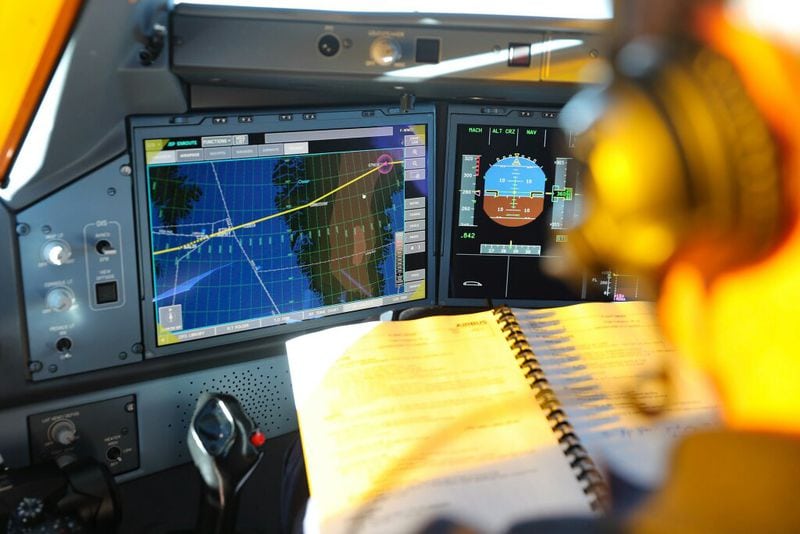
An Airbus A350-1000 cockpit. Photo: Airbus.
After reports emerged in several media outlets last week noting that the International Civil Aviation Org. (ICAO) is calling for video recorders to be standard equipment in future commercial aircraft cockpits. In an emailed statement to Avionics, ICAO has confirmed that it is not yet calling for such regulation, but rather is still undertaking State consultations on related proposals.
Articles published by both The Wall Street Journal and ABC News last week described a letter ICAO sent to national aviation regulatory agencies as the United Nations’ aviation safety body calling for newly designed airplanes to start featuring cockpit video recording cameras as standard equipment by 2023. However, the letter, which was also obtained by Avionics, was actually sent by ICAO’s Secretary Gen. Fang Liu to regulators seeking comments on proposed amendments to the organization’s Standards and Recommended Practices (SARPs) to Annex 6, and parts I, II and III to provide provision for the recording of information displayed to flight crews as well as to expand the sets of parameters recorded by flight data recorders and simplification of flight recorder SARPs overall.
“The current ‘call’ being reported by some outlets is incorrect, as the proposals are still at a nascent stage,” Anthony Philbin, chief communications officer for ICAO, told Avionics. “The state letter being circulated at present is requesting comments on the still draft amendments to Annex 6 to the Chicago Convention.”
According to ICAO’s letter, the proposals to amend the Annex 6 SARPs were considered by ICAO’s Air Navigation Commission during the ninth meeting of the flight recorder specific working group in later 2016. The proposed amendments, contained in Attachments B, C and D, introduce new SARPs on airborne image recordings, additional flight data recorder parameters and the simplification of flight recorder SARPs, the letter said.
Under the proposed amendment, a new provision for airborne image recordings would be added to Part I of Annex 6 of the standards. The new provision would require all aircraft with a maximum takeoff weight of more than 59,000 pounds seeking a type certification to be equipped with a crash-protected flight recorder capable of recording images of the information presented to the pilots flying the aircraft.The proposal goes on to list the applications to be recorded, which was that the operation of switches and selectors and the images displayed to the flight crew from electronic displays should be captured by image sensors. Image recorders would also be required to capture primary flight and navigation displays, aircraft system monitoring displays, engine indication displays, traffic terrain and weather displays.
Within the proposal, the researchers noted that the ICAO has received safety recommendations for the availability of image recordings to be included in Annex 6, due to a lack of data not available on the cockpit voice recorder or flight data recorder to analyze human performance. Additionally, the proposal notes that the recordings would not capture images of actual pilot movements, but rather would focus on capturing critical flight information being displayed to the pilots and system responses to their inputs.
The ICAO’s Air Navigation Commission, which serves as the main technical advisory body for the ICAO council, is overseeing the consultation process for the image recordings proposal.
In the past, the National Transportation Safety Board in the United States has proposed the idea of featuring cockpit video recording in airliner cockpits several times since the year 2000. However, such proposals have largely been opposed, especially by pilot unions who view such a stipulation as an invasion of privacy. NTSB has never been met with support for such a requirement from the FAA, since first proposing it in the year 2000.
Philbin said the council will likely consider proposals in the spring of 2018.
“These proposed amendments, once fully finalized, will ultimately be considered by the 36-State ICAO Council in the Spring of 2018, based on the current timeline being worked towards. Until the Council’s review and possible adoption, however, none of this can be confirmed as an official development, and certainly it does not represent a ‘call’ on behalf of ICAO, but rather the States which cooperate through us,” he said.
NOTE – The first paragraph has been updated to reflect the fact that the amendments and standards agreed through ICAO must be adhered to by government signatories to the Chicago Convention, so the agency does in a sense have the authority to issue globally-binding provisions. A previous version of this article reported that ICAO did not have the authority to call for the inclusion of cockpit cameras in newly designed airplanes.